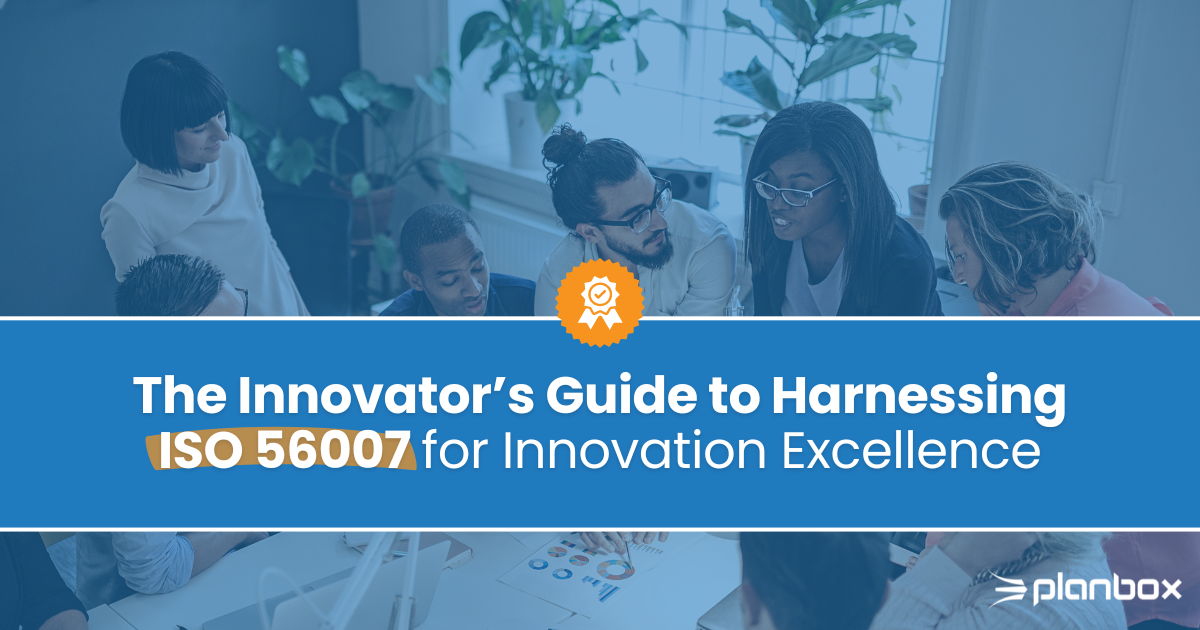This article originally appeared on Forbes.
Recognizing the pivotal role that ideas play in driving innovation, the International Organization for Standardization (ISO) has introduced ISO 56007 guidance on tools and methods for managing opportunities and ideas. This standard serves as a comprehensive guide to managing innovation opportunities and ideas. Representing a culmination of a decade’s worth of collaboration and expertise, this standard emerges as a compass for innovation practitioners. In this exploration, we unravel what ISO 56007 is about and how it seamlessly integrates with the innovation odyssey toward ISO 56001 certification.
ISO 56007’s Framework for Transformative Ideas
ISO 56007 stands out by providing innovative tools and methods essential for fostering a culture of innovation. It recognizes that a consistent flow of ideas is the lifeblood of innovation, emphasizing the importance of effectively managing these ideas. The standard offers techniques for identifying and evaluating innovation opportunities, including tech scouting, trend spotting, understanding customer needs and identifying areas ripe for technological advancements.
Building an Innovation-Friendly Ecosystem with ISO 56007
One of the fundamental aspects highlighted by ISO 56007 is the creation of an environment conducive to idea generation. This involves fostering an open, collaborative culture that encourages creativity, risk-taking and continuous learning. The standard advocates for practical methods to stimulate idea generation, such as brainstorming sessions, innovation workshops and suggestion systems. By providing guidance on cultivating an atmosphere that nurtures innovation, ISO 56007 becomes an invaluable resource for organizations aiming to drive sustainable innovation success.
The Five Pillars of Innovation Success Under ISO 56007
ISO 56007 emphasizes five enabling factors crucial for successful innovation management:
• Top management commitment: The commitment of top-level executives is paramount in creating a culture that values and supports innovation.
• Strategy: Aligning innovation efforts with the overall business strategy ensures that ideas contribute to the organization’s long-term objectives.
• Governance: Establishing effective governance structures ensures proper oversight and control of innovation processes.
• Resources: Adequate resources, both financial and human, are essential to support and implement innovative ideas.
• Organizational support: The entire organization must be aligned to support innovation initiatives, creating a collaborative ecosystem.
From Idea Generation to Validation with ISO 56007
ISO 56007 breaks down front-end innovation activities into four essential stages:
1. Identification: In the first stage, organizations actively seek and recognize potential opportunities and ideas. This involves not only internal exploration within the organization’s ecosystem but also extends to external sources, fostering a holistic approach to idea generation. The goal is to cast a wide net and capture innovative sparks wherever they may arise.
2. Creation: In the second stage, ISO 56007 encourages a creative process where identified ideas are developed and refined. This involves collaborative efforts, drawing upon diverse perspectives within the organization to ensure a well-rounded and innovative approach. The standard recognizes that the strength of an idea often lies in its ability to evolve through collective creativity.
3. Validation: The third stage is a pivotal checkpoint in the innovation journey. Ideas undergo rigorous scrutiny to ensure they align with strategic objectives and possess the potential for success. This phase serves as a crucial filter, refining the pool of ideas to those concepts with the greatest potential for value creation.
4. Evaluation: The fourth stage involves a meticulous assessment of ideas. Organizations carefully weigh the potential risks and benefits, selecting those concepts with the most significant potential to deliver value aligned with the overarching strategic objectives. This phase requires a strategic mindset, balancing innovation aspirations with a realistic understanding of an idea’s feasibility and impact.
Bridging Standards: The Convergence Between ISO 56007, ISO 56001 and ISO 56004
ISO 56007 serves as a critical link in the larger framework of innovation management standards. To achieve ISO 56001 certification, organizations must embrace ISO 56004 first, establishing a baseline and determining their current level of maturity in innovation management. ISO 56007 complements this journey by providing practical tools and guidance for implementing effective front-end innovation activities, aligning with the overarching goal of driving sustainable innovation success.
In essence, ISO 56007, from the ISO 56000 Series focused on innovation management, is a beacon guiding innovation practitioners in large companies toward excellence. By offering a comprehensive approach to managing innovation opportunities and ideas, it becomes an integral part of the path toward ISO 56001 certification.
As organizations navigate the landscape of innovation, ISO 56007 equips them with the tools and insights necessary to nurture a culture of innovation, effectively manage the flow of ideas and capitalize on emerging opportunities. This strategic approach is instrumental in steering organizations toward a state of being future-fit, ready to thrive in an ever-evolving business world.

Ludwig Melik
CEO at Planbox and author of the Future-Fit Manifesto. I help organizations build a sustainable culture of innovation. Follow me on Twitter or LinkedIn.

